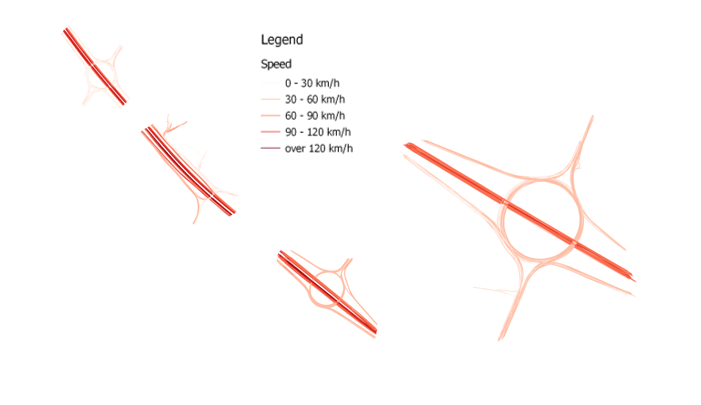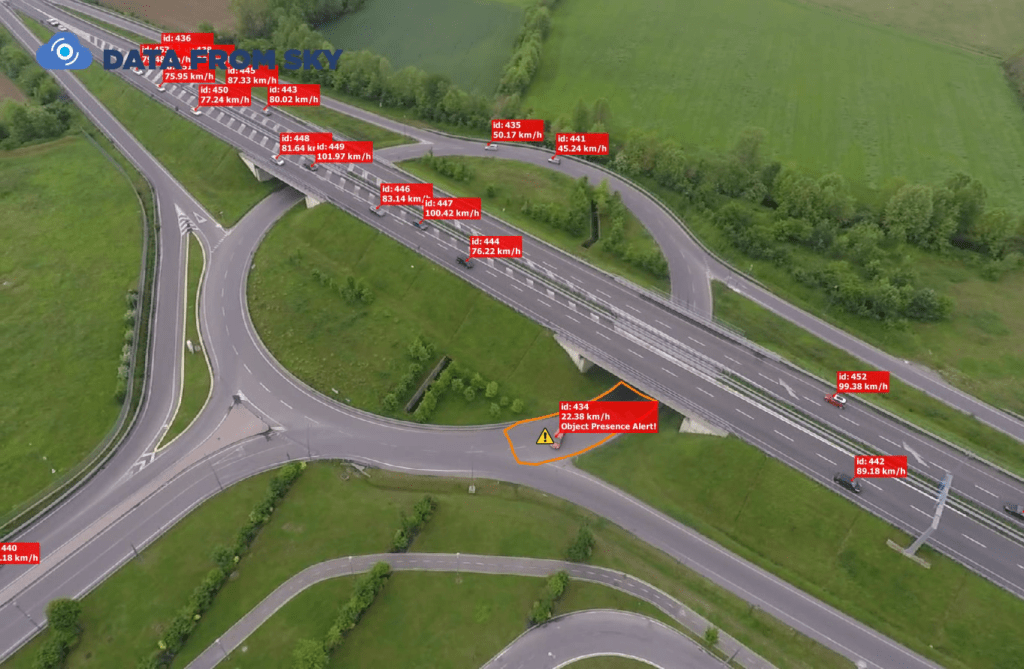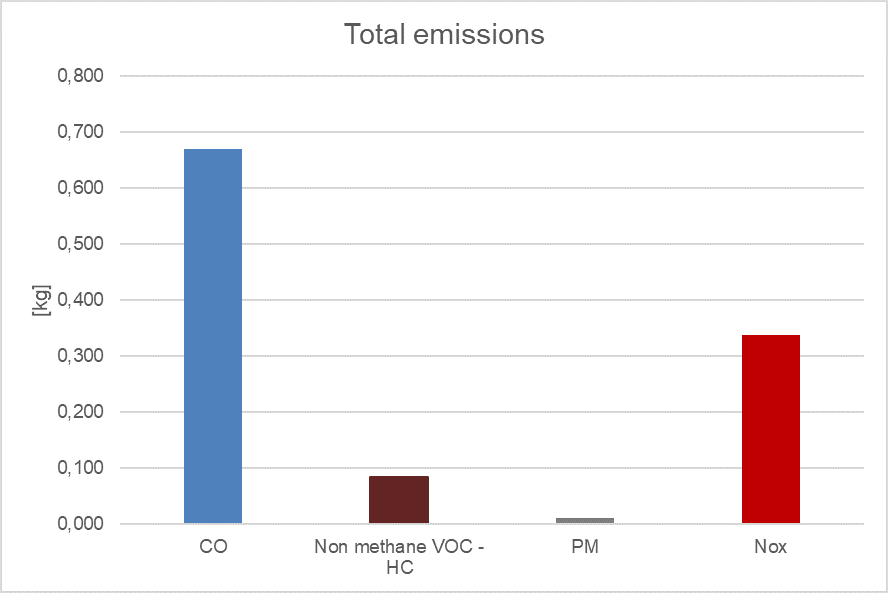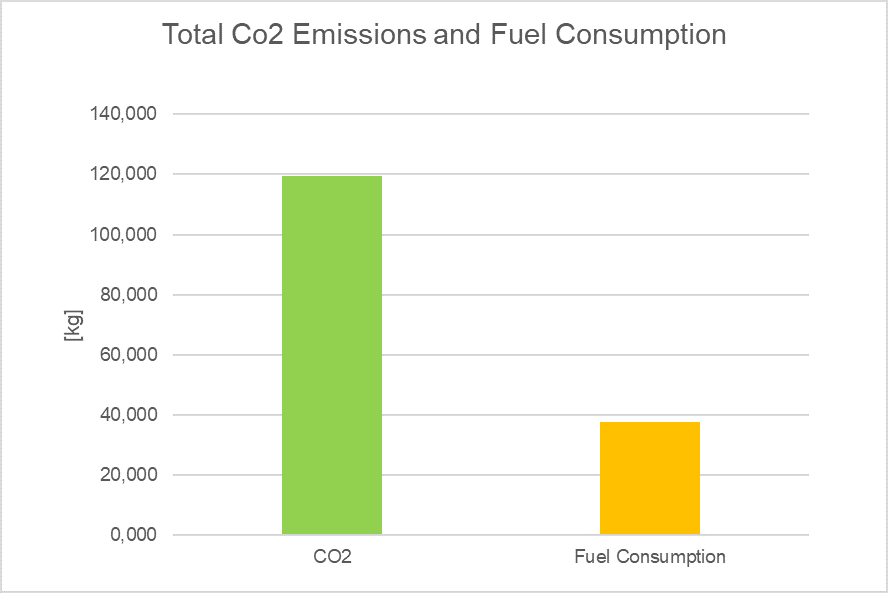DataFromSky in cooperation with Trafficlab, conducted an important and complex traffic analysis in Italy, over the motorway junction of Dalmine (Bergamo), near the A4 motorway (Torino – Trieste), and the highway SS470. With the aid of a special balloon (Immagini al Volo) and DataFromSky, it was possible to obtain a complete picture of the performance of the vehicles during the morning peak hours (7.00 – 9.00).
In particular, the studied elements are 4 junctions: 3 roundabout and 1 multi-level junction, directly connected to the motorway.

Through the traffic flows obtained, it was possible to create an OD-matrix for every junction and for every type of vehicle (bicycles, motorcycles, cars, medium vehicles, high vehicles, buses), to extrapolate information about the behaviour of every vehicle, such as acceleration, speed, time gap, time to follow; all these data are available for every route and every type of vehicle. The acceleration and the maximum and minimum speed values represent a valid help for the creation of a traffic simulation on the junction that were considered. The results are great with a minimum difference between the number of entering vehicles and the number of exiting vehicles (it has to be considered that the surveys were conducted in different times and days).
Another peculiarity of this tool is to give the possibility to elaborate vehicle’s trajectories with a GIS software. The trajectories are connected to a geo-database that contains all the information about the vehicle and its behaviour (shape files).

It is interesting to focus on the incorrect behaviour of road users with the help of the object presence alert, the new special feature of DataFromSky Viewer. For example, it was possible to see that a vehicle crossed the roundabout in the opposite direction!

Finally, thanks to an in-depth analysis of the Copert model about pollutant emissions, it was possible to define the quantities of pollutants released into the atmosphere by the traffic flow of the considered area: CO [kg], Non methane VOC – HC [kg], PM [kg], NOx [kg], CO2[kg] e Fuel Consumption [kg].





